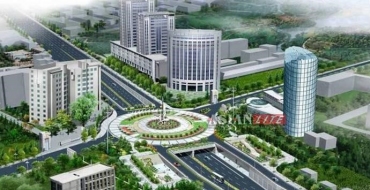These days, the concept of ‘smart cities’ is doing round in the realty sector. This concept has evolved after the rampant real estate development in numerous territories across the globe in a short span of time. Due to the population and limited land, the impact has been seen prominently in India.
The primary issue with comprehensive real estate development is that there has been no micro planning in the past. Gurgaon- for example- even today suffers from the lack of basic coordinated infrastructure. The reason for this is that when the opportunity arrived, the authorities were not ready for the vast infrastructure development and pockets developed which did help the city evolve but in the end did not turn out to be sustainable development centres.
The Need of Smart Cities
The answer to such issues is smart cities. These cities have been conceptualized to do away variegated development and to allow future development. They can be defined as urban regions which have an advanced form of infrastructure. Sustainable real estate, market viability and communications are the key features of smart cities.
Not an Old Concept
The concept of smart cities originated in 2008 and was the brainchild of IBM. The company wanted to develop a ‘Smart Planet’ and this initiative broke down into the creation of ‘smart cities’. The idea was imbibed by many nations around the world. Many countries adopted and developed their cities according to those principles. The end result can be seen in the form of Vienna, Aarhus, Amsterdam, Cairo, Lyon, Málaga, Malta, the Songdo International Business District near Seoul, Verona etc
India soon followed suit and the new development centres include Kochi in Kerala, Ahmedabad in Gujarat, Aurangabad in Maharashtra, Manesar in Delhi NCR, Khushkera in Rajasthan, Krishnapatnam in Andhra Pradesh, Ponneri in Tamil Nadu and Tumkur in Karnataka.
All these cities are marked by presence of economic zones which have relaxed tax norms and rules to help the development of businesses. These make all such areas lucrative for foreign direct investment. In addition there are zones for development of residential and commercial infrastructure.
New technologies are implemented in these zones to make them the growth drivers. Information technology is an integral part of the infrastructure of smart cities. Manesar in Gurgaon is a perfect example of a smart city which has drawn considerable attention from Gurgaon towards itself.
How are Smart Cities Different?
Let us take the example of Noida which is a planned city. It was planned as an industrial township. There were to be flats in Noida along with standalone apartments and industrial zones. But when it was planned, there were no provisions to include newly developed amenities. However the city even today lacks the pivotal technology infrastructure which marks the presence of a smart city. Commercial properties are available in Noida but do not include the benefits of smart cities. Hence the possession of property in Noida has also been lopsided, with considerable inclination towards residential properties.
In India, Aurangabad, Manesar and interestingly Ahmedabad have turned out to be successful investment hubs to have made highlights. Ahmedabad has proven that an old city can also be transformed into a sustainable developmental zone.
That being said, ‘smart cities’ require private investment for further development. It is these private parties that push the limits of the boundaries of development of smart cities.
In Conclusion
Smart cities require immense planning and government support. In addition, they provide benefits to private investors and persuade them to invest more in the areas for their development.

